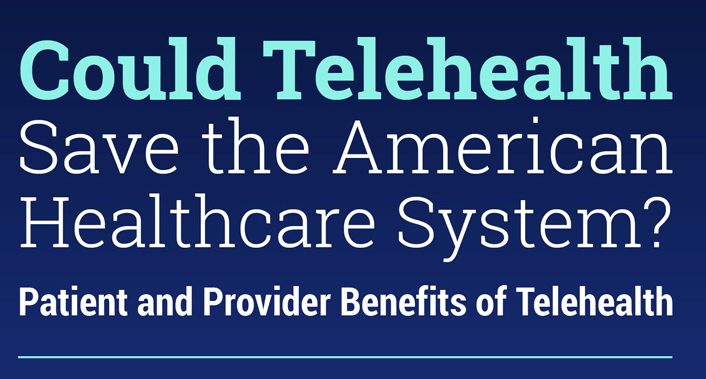Could Telehealth Save The American Healthcare System?
TABLE OF CONTENTS
I. Telehealth Statistics

Telehealth acceptance and use is expected to continue to grow in 2021, as many patients and providers used telehealth during the COVID-19 pandemic. However, some experts are concerned there may be a decrease if reimbursement levels for telehealth services do not continue.
- Nearly one-third of health care leaders expect to increase telehealth utilization this year.
- About 35% of health care leaders expect to decrease use of telehealth, primarily due to coverage concerns as current reimbursement levels may be dialed back.
- Telemedicine access is extremely or very important to 40% of millennials, 27% of Gen Xers, and 19% of baby boomers.
- There’s a high level of comfort with the idea of telemedicine, as 88% of adults say they’re comfortable using at least one form of telemedicine.
| Without Telehealth: | With Telehealth: |
| Patients are limited in regards to the healthcare services they can access without telehealth.
|
Patients enter into a new era of healthcare possibilities with telehealth services.
|
II. Benefits of Telehealth
| For Patients: | For Providers: |
|
|
III. Telehealth Benefits All Healthcare Settings
Telehealth is saving the American healthcare system because it can be used in almost any healthcare setting.
It has already been adopted in the following settings:
- Inpatient: 63%
- Outpatient: 45%
- Primary care: 30%
- Emergency: 22%
- Post-acute: 10%
Over the next few decades, telehealth will likely become adopted in the majority of correctional facilities and schools.
As telehealth becomes more widely adopted, patients are enjoying favorable outcomes, reduced wait times, increased access to health services, and lower medical costs. Telehealth truly is saving the American healthcare system. To learn more about how you can access telehealth services or to implement them at your practice, visit www.onlinedoctor.com.
IV. Sources
- Medical Group Management Association Stat poll | Last accessed January 2025
- Healthcare IT News: Millennials demand telehealth in a move away from traditional primary care model | Last accessed January 2025
- Chiron: How Older Adults Feel About Telemedicine | Last accessed January 2025
- American Hospital Association: Fact Sheet – Telehealth | Last accessed January 2025
- Telemedicine Innovation: Rural health system keeping more people alive at lower costs | Last accessed January 2025
- Telehealth industry trends for 2019 | Last accessed January 2025

